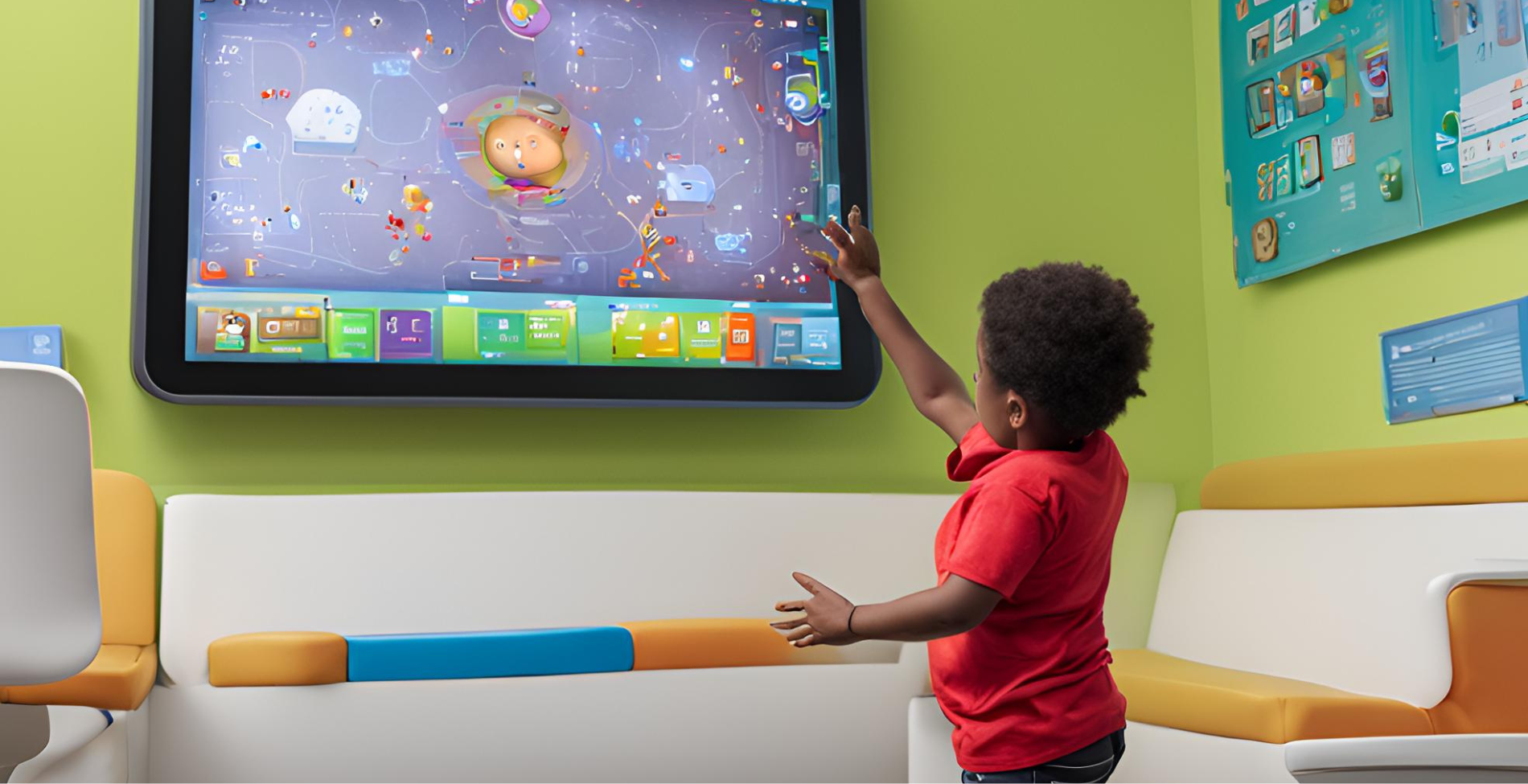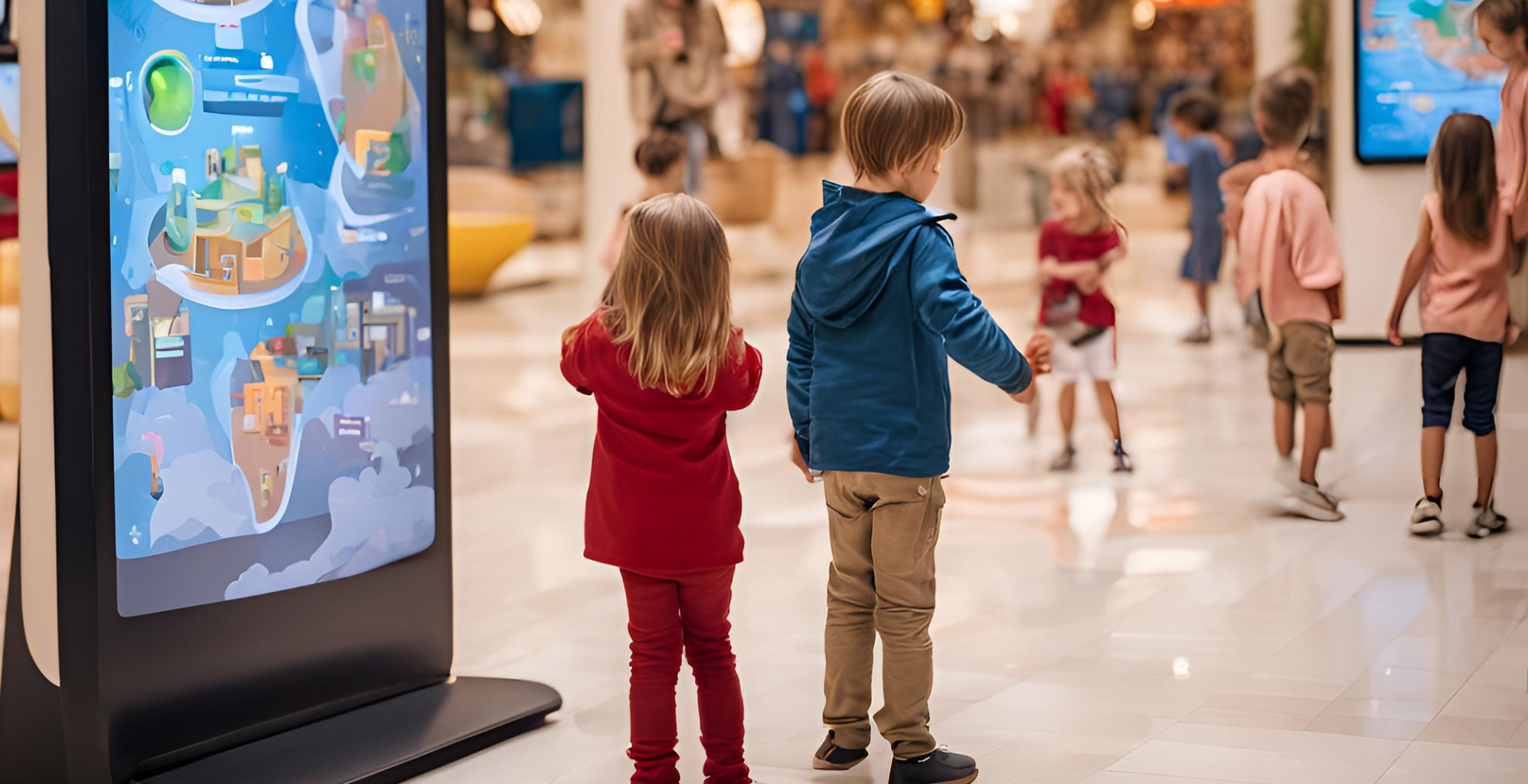Headquarters
7150 Columbia Gateway Drive, Suite L, Columbia, MD 21046
New York Location
112 West 34th Street, 18th floor, Room 18025 New York, NY 10001

Digital signage technology has evolved to be both user-friendly and versatile, making it accessible to a wide range of users, including children, while offering a complex array of virtual services that can significantly enhance the customer experience. Here’s how it achieves this balance:
Intuitive Interfaces: Digital signage often features touchscreens with large, clear icons and simple navigation menus. This design mirrors the user interfaces found on tablets and smartphones, which children are typically adept at using.
Voice Commands: Some digital signage systems incorporate voice recognition technology, allowing users to interact with the display simply by speaking. This can be particularly helpful for young children who might not yet be proficient readers.
Interactive Content: Engaging and interactive content, such as games, educational programs, and interactive maps, is designed to be straightforward and entertaining, making it easy for children to engage with and use the signage in its installation environment.

Personalization: Digital signage can offer personalized content based on user preferences or behaviors. For example, it can display tailored advertisements, suggest products, or provide personalized greetings. This creates a more engaging and relevant experience for each customer.
Real-Time Information: These systems can display real-time information such as weather updates, news, social media feeds, and event schedules. This keeps customers informed and entertained while they wait or shop.
Interactive Directories and Wayfinding: In large venues like school campuses, malls, airports, and hospitals, digital signage can provide interactive maps and directories. Users can search for stores, services, or points of interest and receive step-by-step directions.
Virtual Assistance: Some digital signage includes virtual assistant capabilities, similar to chatbots, which can answer questions, provide information, and assist with tasks like booking appointments or checking in for services.
E-commerce Integration: Digital signage can integrate with online shopping platforms, allowing customers to browse products, check availability, and even make purchases directly from the display.
Multimedia Displays: These systems can show a mix of videos, animations, and static images, which can be used for advertising, product demonstrations, or creating an immersive brand experience.
Social Media Integration: By displaying live social media feeds, businesses can engage customers with real-time interactions and user-generated content. This can enhance brand loyalty and provide social proof of customer satisfaction.
Analytics and Feedback: Advanced digital signage systems can collect data on user interactions and behaviors. This data can be used to analyze customer preferences, improve service offerings, and tailor future content to better meet customer needs.

The key to digital signage being both child-friendly and capable of offering complex virtual services lies in its user-centered design and advanced technology. By combining intuitive, accessible interfaces with powerful features and real-time capabilities, digital signage can cater to a broad audience while enhancing the overall customer experience through personalized, engaging, and useful interactions.
7150 Columbia Gateway Drive, Suite L, Columbia, MD 21046
112 West 34th Street, 18th floor, Room 18025 New York, NY 10001
Toll-Free
Phone
© Copyright 2025 ITS, Inc. All rights reserved.
Stay in touch with the latest news and updates from ITS, Inc.
7150 Columbia Gateway Drive, Suite L
Columbia, MD 21046
112 West 34th Street, 18-025
New York, NY 10001